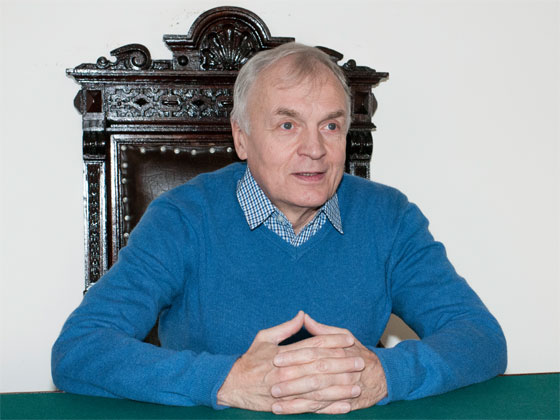Celebrating 150 years of Matematicheskii Sbornik: An interview with Editor-in-Chief Professor Boris Kashin
01 Jun 2016 by alisonhadley
2016 marks the 150th anniversary of the oldest Russian mathematical journal, Matematicheskii Sbornik.
We speak to Professor Boris Kashin, Editor-in-Chief of Matematicheskii Sbornik to find out more about the journal and its English translated journal Sbornik: Mathematics.
Can you start by telling us a bit about the journal?
As you mention, Matematicheskii Sbornik is the oldest Russian mathematical journal. It was established in 1866 during the process of transforming a mathematical circle, founded by Professor N D Brashman from Moscow University in 1864, into the Moscow Mathematical Society.
Since its inception, the journal has become a leading publication in disseminating original research papers containing full results in the author’s field of study. Many eminent mathematicians have been among the Editors-in-Chief and board members of the journal. For example, Matematicheskii Sbornik had the support of Pafnuty Chebyshev, a great Russian mathematician of the 19th century. Chebyshev presented a paper in the very first volume of the journal and published another four papers later on.
With such an established history, we have seen many changes to the journal over the years and as the mathematics community itself has grown. In order to disseminate the research published in Matematicheskii Sbornik to a wider audience, an English translation of the journal, Sbornik: Mathematics, began publication in 1967. Since the beginning of 1995, Sbornik: Mathematics has been published jointly by The London Mathematical Society, Turpion Ltd and the Russian Academy of Sciences (RAS).
Sbornik: Mathematics is published bimonthly and contains only original research papers containing full results in the author’s field of study.
How and when did you become Editor-in-Chief of Sbornik: Mathematics?
I became the Editor-in-Chief at the beginning of 2013, after the death of Andrey Gonchar (1931–2012), who had been at the head of the journal for almost 25 years. He invited me to the Editorial Board of Sbornik in 2007, to take the seat of Academician Petr Ul’yanov (1928–2006), my former teacher. Before I became the Editor-in-Chief of Sbornik, I had been for 25 years a Deputy Editor-in-Chief of Matematicheskie Zametki, another journal of the RAS.
What are your research areas in mathematics? How does it relate to the journal’s subject areas in recent years?
My favourite subjects are orthogonal series, approximation theory, convex geometry and operator theory. These are traditional areas covered by Matematicheskii Sbornik. I have never investigated applied problems on purpose, but recently, due to the rapid development of computer science, several of my papers have gained importance for applications.
What do you have planned to celebrate the journal’s 150th anniversary?
In 2016, all the 12 issues of Matematicheskii Sbornik (and all the six double issues of its English version Sbornik: Mathematics) carry a logo designed to mark the anniversary. However, more importantly, these issues are composed of particularly interesting papers. We have invited several prominent mathematicians from across the world to be our Guest Editors and assemble, in co-operation with members of our Editorial Board, several thematic issues of Sbornik.
A study on Sbornik’s history of the past 150 years is going to be published in the October issue. It is a specially commissioned article, being written by Professor Sergey Demidov, who is a specialist in the history of mathematics.
We have put together a collection of the most influential work to have been published in the English translation of the journal, Sbornik: Mathematics, in 1967–2015. The collection is free to read throughout 2016.
And this October we will celebrate the anniversary together with our colleagues from the Steklov Mathematical Institute at the special seminar devoted to the event.
How would you describe the journal’s mission, and editorial objectives today?
It is extremely important that each field of science has several independent centres of high-level expertise. But a scientific journal is just such a centre! It is our aim to keep publishing Sbornik as a journal where Russian mathematicians present their best papers and where each submitted manuscript receives an unbiased peer review.
Of course, we are also interested in closer co-operation with international science centres and we are already making certain moves in this direction. For example, I can point out the recent joint issues of Matematicheskii Sbornik and Journal of Approximation Theory, which were dedicated to the memories of Andrey Gonchar and German mathematician Herbert Stahl.
Our co-operation of many years’ standing with The London Mathematical Society and IOP Publishing is extremely important for us: it makes our journal available to the mathematics community all over the world.